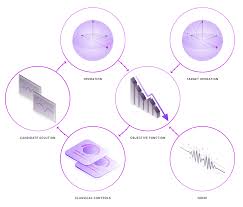Source: marktechpost.com
Google recently released TensorFlow Quantum, a toolset for combining state-of-the-art machine learning techniques with quantum algorithm design. This is an essential step to build tools for developers working on quantum applications.
Simultaneously, they have focused on improving quantum computing hardware performance by integrating a set of quantum firmware techniques and building a TensorFlow-based toolset working from the hardware level up – from the bottom of the stack.
The fundamental driver for this work is tackling the noise and error in quantum computers. Here’s a small overview of the above and how the impact of noise and imperfections (critical challenges) is suppressed in quantum hardware.
Noise And Error: The Chinks In Armor When It Comes To Quantum Computers
Quantum computing combines information processing and quantum physics to solve challenging computer problems. However, a significant issue in quantum computers is susceptibility to noise and error, limiting quantum computing hardware efficiency. Noise refers to all sorts of things that can cause interference, like the electromagnetic signals from the WiFi or disturbances in the Earth’s magnetic field. Most quantum computing hardware can run just a few dozen calculations over much less than 1 ms before requiring a reset due to the noise’s influence. That is about 1024 times worse than the hardware in a laptop.
Many teams have been working to make the hardware resistant to the noise to overcome these weaknesses. Many theorists have also designed a smart algorithm called Quantum Error Correction. QEA can identify and fix errors in the hardware, but it is very slow or incapable of practice. Because the information is to be spread in one qubit over lots of qubits, it may take a thousand or more physical qubits to realize just one error-corrected “logical qubit.”
To overcome this, Q-CTRL’s “quantum firmware” can stabilize the qubits against noise and decoherence without the need for extra resources. This is done by adding the new solutions that improve the hardware’s robustness to the error at the lowest layer of the quantum computing stack.
The protocols described by the Quantum firmware are there to deliver the quantum hardware with augmented performance to higher levels of the abstraction in the quantum computing stack.
In general, quantum computing hardware relies on light-matter interaction, which is made to enact quantum logic operations.
